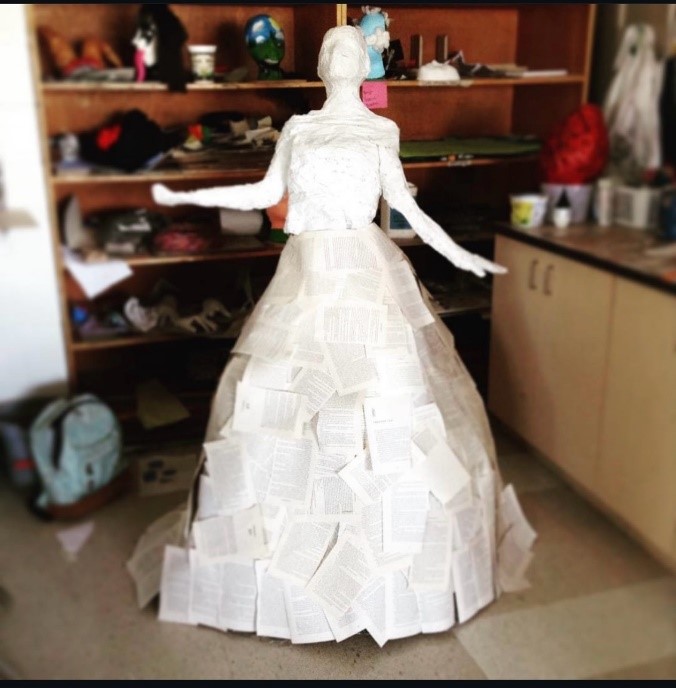
What do colours make us feel? What stories do our rainbows tell?
The Kindergarten class had been learning about feelings. As part of this larger unit, they had read books, discussed images, and shared stories to begin to recognize and understand their own feelings and the feelings of others. The teacher had facilitated discussions about differences and how things that may make one person happy or excited may make someone else feel nervous or unhappy. One such discussion occurred after reading the book Jabari Jumps, in which a boy attempts to work up the courage to jump off the diving board. After reading the book, one learner exclaimed, “I would never do that!” while other learners shared stories about jumping off a diving board or a dock into the lake.
As the final activity of the unit, the teacher brought in a bucket of paint chips. She started off by allowing learners to look through the chips, and watched as conversations began to happen organically. Learners began to share about their favourite and least favourite colours with their peers, and began to make connections between the colours and past experiences, such as, “My dog is this colour!” or “This is the colour of [favourite television character].” After a few minutes of sharing among the learners, the teacher brought them back into a whole-group discussion. The teacher picked up a pink paint chip and shared a story about eating a pink popsicle while camping with her family. She shared that the memory made her feel happy, so looking at the pink colour made her feel happy. The teacher then explained that they were going to each make a “feelings rainbow.” The learners each picked out colours that were meaningful to them and that provoked a feeling. The teacher scribed that feeling on the paint chip for them. The teacher modelled examples of different feelings, such as “happy,” “sad,” “angry,” “excited,” and “sleepy.” The learners then glued their paint chips into a rainbow.
Once the gluing was complete, the teacher provided learners an opportunity to share their rainbows with one another. Storytelling occurred naturally and the teacher/EA/learning support teacher were able to scribe stories that learners wanted recorded. The teacher facilitated “noticing” discussions by making comments such as, “I notice that blue makes Sara feel happy, but it makes Andre feel sad. How exciting that we are all different!”
Read-Alouds
Cornwall, Gaia. Jabari Jumps. Candlewick, 2017.
Llenas Little, Anna. The Color Monster: A Story about Emotions. Brown Books for Young Readers, 2018.
Parr, Todd. The Feelings Book. LB Kids, 2005.